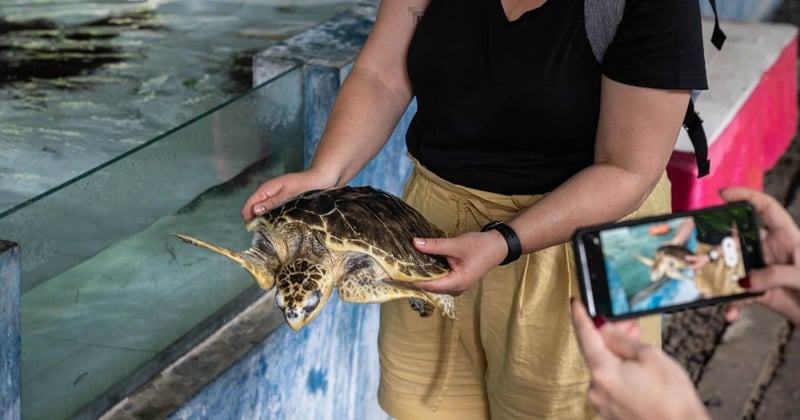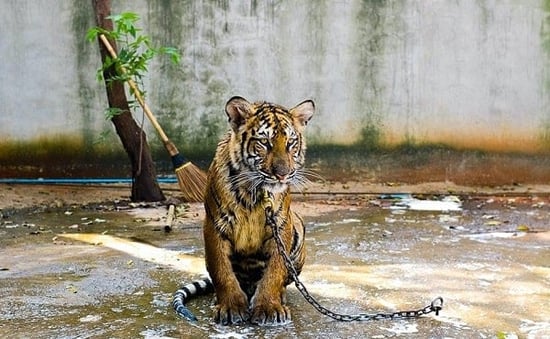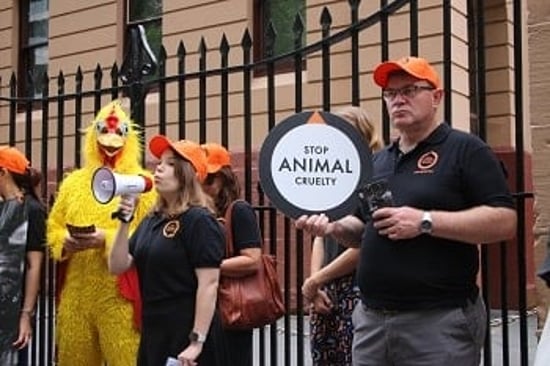
Turtle ‘sanctuaries’ misleading Bali tourists
News
The waters of Indonesia are home to six out of seven of the world’s sea turtle species. All species of sea turtles are currently listed as endangered by the UN. There’s no doubt turtles need our help. Sadly, some venues in Bali and Lombok are far from the 'sanctuaries' they claim to be.
World Animal Protection recently conducted a reinvestigation into 34 popular wildlife venues across Bali and Lombok. We had visited many of these venues five years ago to assess welfare conditions for wild animals held captive in the tourism industry on the islands, and we wanted to go back to assess any significant improvements in the captive conditions of wild animals in tourism since our 2018 report.
However, our assessors were shocked to learn that many captive sea turtles continue to be kept in severely inadequate conditions in tourist venues on these islands.
One venue housed around 40 turtles including the critically endangered hawksbill turtle, the endangered green turtle, and the vulnerable loggerhead and olive ridley species in small, overcrowded tanks with barely enough water to submerge.
The inadequate levels of water made it very difficult for the turtles to move away from tourists who were trying to interact with them. These conditions are wholly unacceptable.
There was also a turtle pen located on the shore at the entrance of the venue that housed 14 large green turtles and allowed tourists touch and feed them.
In the wild, sea turtles are typically solitary creatures, rarely interacting with each other outside of mating. In captivity, they are forced together into large social groupings, likely causing psychological distress.
Wildlife, not entertainers
At one of the turtle venues that our team inspected, a staff member pulled out a turtle for an unrequested photo opportunity which caused the sentient being to flail in distress.
There have been documented cases of tourists dropping turtles, damaging their protective shells and leaving them with skin lesions, yet tourists are regularly allowed to touch, interact and take selfies with the turtles at these venues.
Many turtles we observed in Bali also showed signs of psychological distress while being handled by tourists. They exhibited anti-predator and escape behaviour when in contact with tourists.
Turtles are wild animals. They are not for our entertainment. No wild animal should live its life in a concrete pen being passed between tourists for hours on end.
There's no excuse, it's abuse.
Become part of the solution
educing tourist demand for cruel wildlife attractions is vital in ensuring that turtles remain in the wild, where they belong. That’s why we’re calling on all tourists, whether here in Australia or abroad, to make ethical travel choices.
We know that most tourists visit these venues because they love animals, and they want to see them up close. If you want to see a turtle, we encourage you to go and see one in the wild, where it belongs.
Alternatively, there are some reputable facilities associated with NGOs that are genuinely dedicated to turtle conservation. When looking at these venues, just remember that if they allow you to ride, hug, or have a selfie with the turtle, you can be sure it’s cruel. Only visit venues that put the needs of the turtles first.
Avoid holidays that harm wildlife and boycott the travel companies that promote them.
Turtles are wild animals. They are not there for our entertainment. No wild animal should live its life in a concrete pen being passed between tourists for hours on end.
Animals, not entertainers
Across the globe, animals at wildlife tourism venues are forced to endure intense pain and mostly unseen suffering to entertain tourists and visitors on a daily basis.
Take action
Take action today by signing our petitions and pledging to protect wildlife and farm animals.
 Credit: World Animal Protection / Andito Wasi
Credit: World Animal Protection / Andito Wasi Credit: World Animal Protection / Andito Wasi
Credit: World Animal Protection / Andito Wasi Credit: World Animal Protection / Andito Wasi
Credit: World Animal Protection / Andito Wasi Credit: Neil Cook
Credit: Neil Cook
